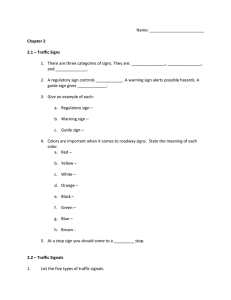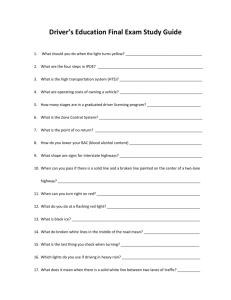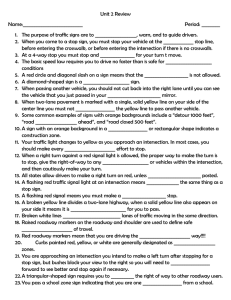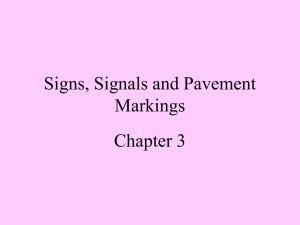Day 3 - Staff Web Pages
advertisement
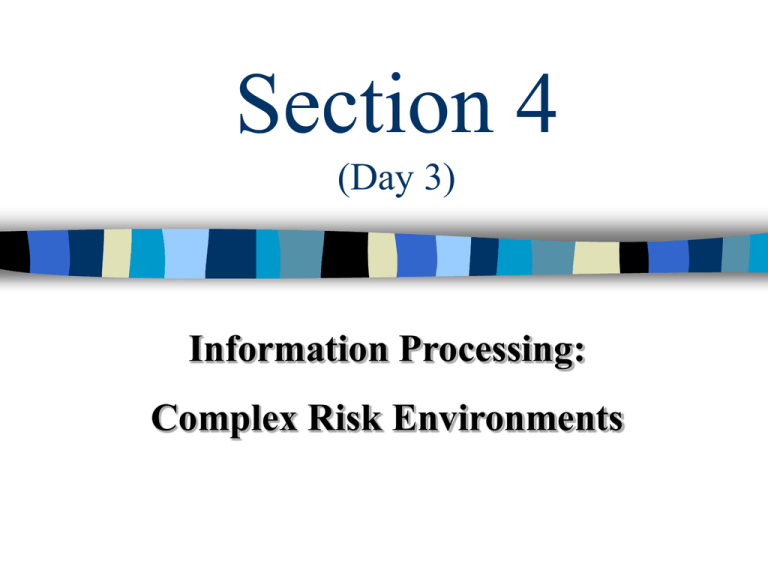
Section 4 (Day 3) Information Processing: Complex Risk Environments Bell Ringer Write a half a page red to red on the below statement. Save these to be turn in on test day. Worth 10% of your grade. Some students prefer to study alone. Others prefer to study with a group of students. Which do you prefer? Use specific reasons and examples to support your answer. Reminder 1. 2. Bring paper/pen/pencil and notebook Electronics are for instructional use with permission 3. Did you do Section 4 Day 2 quiz?? 4. No Excuses why you didn’t take Quizzes 1-6 before test day!! (Quizzes are worth 30% of grade) 5. Attendance is MANDATORY!! (NO SLEEPING in class) 6. All notes can be found on Harrisonburg’s staff website: http://staff.harrisonburg.k12.va.us/~tbutler/ 7. If you are NOT taking notes in class, please be quiet and ask to use the restroom at the end of class. “Green Card” Your Name Here Harrisonburg High School H.C.P.S 36 x 03/06/2012 This is what you are trying to get at the end of class.. Day 3 Objectives • • • • The students will be able to understand situations that should NEVER be done on interstates. The students will be able to understand multiple lane roadway dangers. The students will be able to understand highway hypnosis. The students will be able to understand why ramp metering is effective. Related SOL: DE.4, DE.5, DE.6, DE.7, and DE.12 High Speed Considerations On the Expressway… Do Not: Drive over or across the median or yellow painted line. Make a left turn or a U-turn on crossovers (designed for emergency vehicles only). Use the left lane except for passing. Change lanes without signaling and checking for an adequate gap in traffic. This is a median On the Expressway… Do Not: Drive onto an expressway except from an on-ramp. Park or Stop on an expressway shoulder unless you have an emergency or mechanical difficulties. Backup. Walk or ride a bike. This is a shoulder NEVER BACK UP ON AN EXPRESSWAY!! Multiple Lane Roadway Dangers Brake 20 mph 20 ft. 40 mph At higher speeds greater braking distances are needed to stop and… 80 ft. 60 mph 180 ft. Field of vision is narrowed Highway hypnosis may occur 65 mph Velocitation may effect your ability to judge speed Traffic may enter and/or exit on your left Highway Hypnosis Is a dulled or drowsy condition that can occur when driving long distances Situation becomes worse when the driver’s eyes focus on the center line. Plan breaks and rest stops to combat highway hypnosis or go to a safe area for rest or sleep when tired. Multiple Lane Roadway Dangers Vehicles moving onto the shoulder or re-entering the roadway Windy and/or wet sections of the roadway Two vehicles changing lanes at the same time into same lane Slow moving vehicles ahead or “Pack Driving” Tires losing traction and hydroplaning during wet weather conditions Ramp Metering Used to control large volumes of traffic entering expressways Uses a system of lights and sensors Allows only a few cars at a time to enter congested limited access highways Short Trips on Expressways Know the name, route, and number of the entrance and exit to be used Check vehicle for maintenance problems Take a local map Plan a time to travel to avoid congestion around major cities Long Trips on Expressways Do vehicle maintenance checks Balance vehicle load Plan stops for: – Food – Rest – Fuel Know the route numbers you need to take Take a map of the planned route Check with police or VDOT for construction delays Carry money or credit cards Reducing Risk Entering the Roadway Search for proper entrance Search for potential conflicts Prepare to adjust speed Avoid stopping on the ramp Be prepared to drive onto the shoulder Merge smoothly Create space around your vehicle Increase Following Distance INCREASE When following large trucks or buses When following motorcycles When driving in bad weather When being tailgated When driving with a heavy load or pulling a trailer When entering/exiting the expressway Special Roadway Conditions Expressways through cities • Avoid driving in the right lane when vehicles are merging • Search for signs, signals, and roadway markings • Search for exits early and adjust position in adequate time to exit safely • Don’t make last minute lane changes to gain access to an exit • Monitor the zones around your vehicle and adjust position to create space cushions Special Roadway Conditions Disabled vehicles • Don’t be a “rubber necker” • Give the disabled vehicle plenty of room • Pull as far off the roadway as possible if your vehicle becomes disabled Special Roadway Conditions Construction Areas Use caution when approaching: Search ahead for warning signs. Reduce your speed. Adjust position to maintain a space around your vehicle. Special Roadway Conditions-Toll booths Exact change booths — The driver deposits coins (exact change) into a machine. Attendant operated booths — For large vehicles or drivers without exact change. Electronically operated booths — For drivers with prepaid accounts (Smart Tag). When exiting a toll-booth plaza, search traffic to both sides for open space, accelerate smoothly, and adjust speed to blend with the flow of traffic. Class Work Read Pages 46-47 in the driver’s education book. Do Lesson 3 Review Questions 1+2. Write the questions. Save these to be turned in with your test. Don’t forget to take Section 4 Day 3 Quiz on Quia.com THE END !
